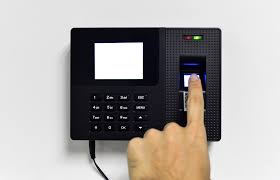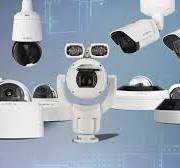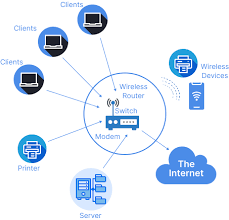Biometric access control systems have revolutionized the way organizations manage entry and exit points, ensuring enhanced security and efficiency. By utilizing unique biological traits such as fingerprints, facial features, iris patterns, or voice recognition, biometric access control systems offer a highly secure method of authentication that is difficult to forge or replicate.
One of the key advantages of biometric access control is its accuracy in verifying individual identities. Unlike traditional methods like keycards or PIN codes which can be lost, stolen, or shared, biometric data is inherently tied to each person and cannot be easily duplicated. This makes it a reliable and tamper-proof solution for restricting access to sensitive areas within a facility.
Furthermore, biometric access control systems provide real-time monitoring and audit trails, allowing administrators to track and analyze entry and exit logs with precision. This not only helps in identifying unauthorized access attempts but also enables quick response to security incidents by alerting authorities when necessary.
In addition to enhancing security measures, biometric access control systems offer convenience and ease of use for authorized personnel. Employees no longer need to carry multiple keys or remember complex passwords; instead, they can simply scan their biometric data for seamless entry into restricted areas.
As technology continues to evolve, biometric access control systems are becoming more sophisticated and versatile. Some advanced systems now incorporate multi-factor authentication methods for added security layers, combining biometrics with other factors such as smart cards or PIN codes.
In conclusion, biometric access control systems represent a cutting-edge solution for organizations looking to bolster their security infrastructure while streamlining access management processes. With their high level of accuracy, reliability, and convenience, these systems are poised to play a crucial role in safeguarding sensitive information and assets in various industries.
Top 5 Advantages of Biometric Access Control for Enhanced Security and Convenience
- Highly secure authentication method based on unique biological traits
- Difficult to forge or replicate, minimizing the risk of unauthorized access
- Offers real-time monitoring and audit trails for accurate tracking of entry and exit logs
- Convenient and easy to use for authorized personnel, eliminating the need for keys or passwords
- Can be integrated with other security measures for enhanced protection through multi-factor authentication
Challenges of Biometric Access Control: Cost, Security, Privacy, and Integration Issues
- High initial cost of implementation and setup.
- Risk of biometric data being compromised or stolen.
- Potential privacy concerns related to the collection and storage of biometric information.
- Technical limitations such as false rejection or acceptance rates, especially in extreme weather conditions.
- Difficulty in integrating biometric systems with existing access control infrastructure.
- Dependency on reliable power sources for continuous operation, which may be challenging in remote locations.
Highly secure authentication method based on unique biological traits
Biometric access control systems offer a highly secure authentication method based on unique biological traits, such as fingerprints, facial features, iris patterns, or voice recognition. Unlike traditional methods like keycards or PIN codes that can be lost, stolen, or shared, biometric data is inherently tied to each individual and cannot be easily replicated. This ensures a robust level of security by verifying the identity of users with a high degree of accuracy, making it extremely difficult for unauthorized individuals to gain access to restricted areas.
Difficult to forge or replicate, minimizing the risk of unauthorized access
Biometric access control systems offer a significant advantage in that they are difficult to forge or replicate, minimizing the risk of unauthorized access. Unlike traditional methods such as keycards or passwords, which can be easily lost, stolen, or shared, biometric data is unique to each individual and cannot be duplicated. This inherent security feature ensures that only authorized personnel with verified biometric traits can gain entry to restricted areas, enhancing overall security measures and reducing the likelihood of unauthorized access attempts.
Offers real-time monitoring and audit trails for accurate tracking of entry and exit logs
Biometric access control systems offer the valuable pro of providing real-time monitoring and audit trails, enabling precise tracking of entry and exit logs. This feature allows administrators to have immediate visibility into who is accessing specific areas at any given time, enhancing security measures by identifying any unauthorized attempts swiftly. The ability to generate accurate audit trails not only aids in maintaining a secure environment but also assists in investigating security incidents efficiently and taking prompt action when needed.
Convenient and easy to use for authorized personnel, eliminating the need for keys or passwords
Biometric access control systems offer a significant advantage in terms of convenience and user-friendliness for authorized personnel. By eliminating the need for keys or passwords, employees can seamlessly access restricted areas with a simple scan of their biometric data. This streamlined process not only saves time but also reduces the risk of lost or stolen credentials, providing a hassle-free and secure way for individuals to move through access points within a facility. The ease of use associated with biometric access control systems enhances overall operational efficiency and ensures that authorized personnel can focus on their tasks without the inconvenience of managing traditional access methods.
Can be integrated with other security measures for enhanced protection through multi-factor authentication
By allowing integration with other security measures, biometric access control systems offer enhanced protection through multi-factor authentication. This approach combines the unique biological traits of individuals with additional layers of security such as smart cards, PIN codes, or security questions, significantly reducing the risk of unauthorized access. By requiring multiple factors for authentication, organizations can ensure a higher level of security and accuracy in verifying individual identities, making it a robust solution for safeguarding sensitive areas and data from potential threats.
High initial cost of implementation and setup.
The high initial cost of implementation and setup is a significant drawback of biometric access control systems. The expense associated with acquiring the necessary hardware, software, and integration services can pose a financial challenge for organizations, especially smaller businesses or facilities with budget constraints. Additionally, the installation process may require specialized expertise and infrastructure modifications, further adding to the overall investment required to deploy biometric access control effectively. Despite the long-term benefits in terms of security and efficiency, the upfront costs involved in implementing biometric access control systems can be a deterrent for some organizations seeking to enhance their access management capabilities.
Risk of biometric data being compromised or stolen.
One significant drawback of biometric access control systems is the inherent risk of biometric data being compromised or stolen. Unlike passwords or keycards that can be changed or reissued if lost or stolen, biometric information such as fingerprints or facial scans is unique to each individual and cannot be easily replaced. If this sensitive data falls into the wrong hands through a security breach or hacking incident, it could lead to serious privacy concerns and potential identity theft issues for the individuals affected. Organizations must implement robust encryption protocols and stringent security measures to safeguard biometric data and mitigate the risk of unauthorized access or misuse.
Potential privacy concerns related to the collection and storage of biometric information.
One significant con of biometric access control systems is the potential privacy concerns associated with the collection and storage of biometric information. As biometric data such as fingerprints, facial features, or iris patterns are unique to individuals, there is a risk of unauthorized access or misuse if this sensitive information falls into the wrong hands. Moreover, there are apprehensions about how securely the biometric data is stored and whether it could be vulnerable to hacking or data breaches, leading to identity theft or other security threats. These privacy concerns raise ethical questions regarding consent, transparency, and data protection regulations that must be carefully addressed to ensure the responsible implementation of biometric access control systems.
Technical limitations such as false rejection or acceptance rates, especially in extreme weather conditions.
One significant drawback of biometric access control systems is their susceptibility to technical limitations, particularly in extreme weather conditions, leading to false rejection or acceptance rates. Factors such as humidity, temperature variations, or harsh environmental elements can impact the accuracy and reliability of biometric data capture, resulting in errors during authentication processes. This can lead to inconvenience for users who may experience repeated rejections or unauthorized access due to system inaccuracies, highlighting the need for supplementary security measures to mitigate these technical challenges.
Difficulty in integrating biometric systems with existing access control infrastructure.
One significant challenge associated with biometric access control systems is the difficulty in integrating them with existing access control infrastructure. Many organizations already have established systems in place, such as keycard readers or PIN-based entry systems, which may not easily accommodate the implementation of biometric technology. This integration hurdle can result in additional costs and complexities during the transition period, as it may require upgrading or replacing current hardware and software to ensure seamless compatibility and functionality. Furthermore, the process of integrating biometric systems with existing infrastructure often involves downtime and disruptions to regular operations, posing a logistical challenge for businesses seeking to adopt this advanced security solution.
Dependency on reliable power sources for continuous operation, which may be challenging in remote locations.
One significant drawback of biometric access control systems is their dependency on reliable power sources for continuous operation, which can pose challenges, especially in remote locations. In areas where access to stable electricity is limited or unreliable, the functionality of biometric systems may be compromised, leading to potential security risks and disruptions in access management. Ensuring a consistent power supply through alternative sources such as generators or solar panels becomes essential in such environments to maintain the effectiveness and reliability of biometric access control systems.




